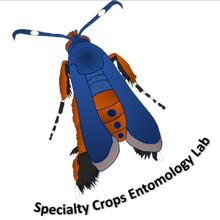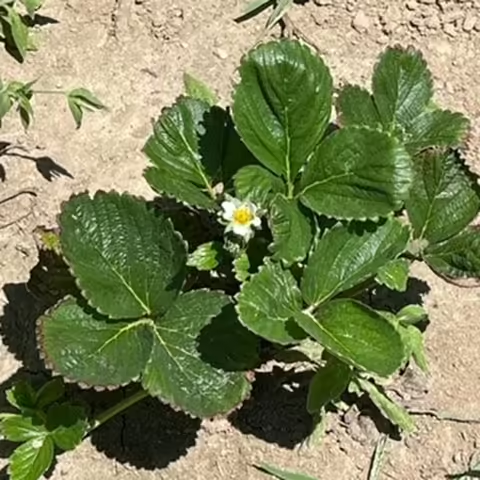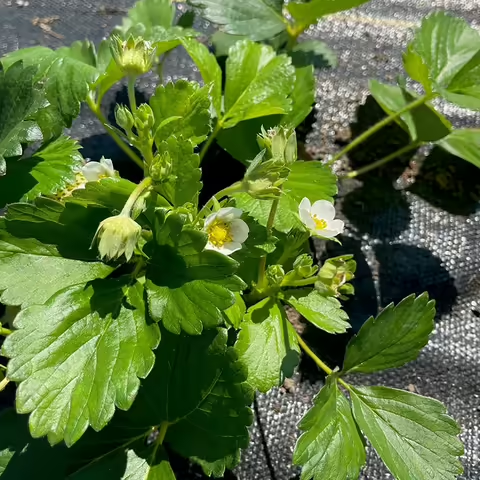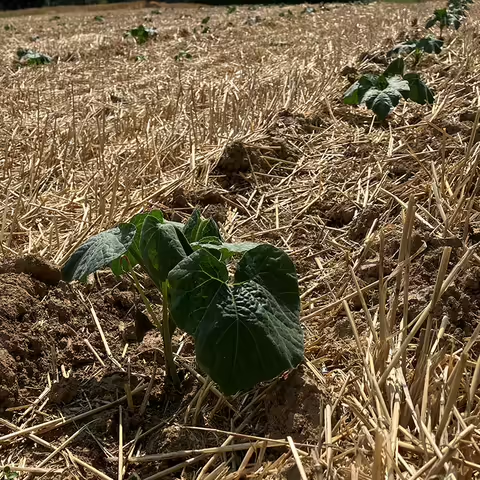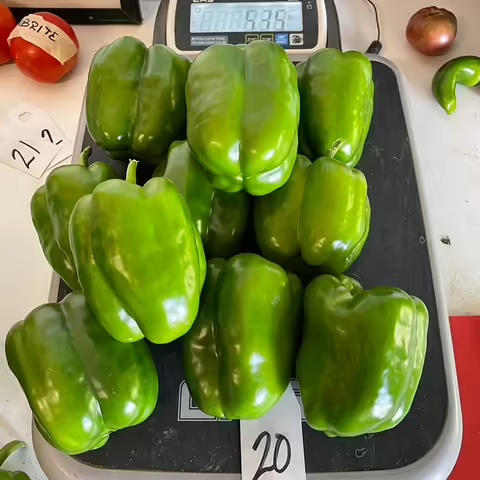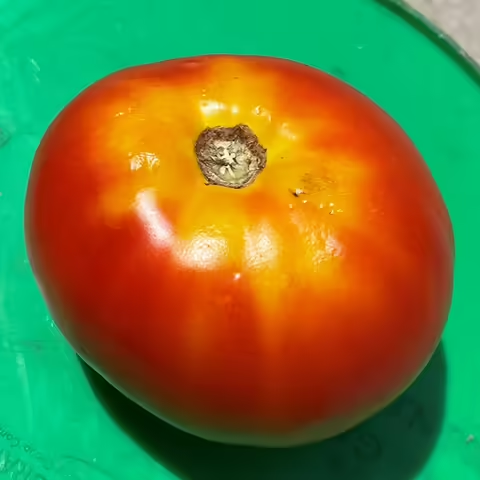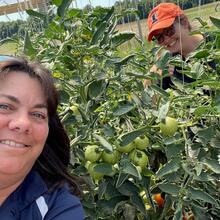
Attend the 2022 Specialty Crops Field Day
The Specialty Crops Entomology Lab is hosting a field day August 18 at the University of Illinois Urbana Champaign Sustainable Student Farm. It will run from 8 to 11 a.m. We will have field presentations on high tunnel insect pests, regenerative agriculture practices, bees in apple production, and other specialty crop topics. Join us and learn more about specialty crop production and our programs at the UIUC Sustainable Student Farm. Register now.
Kacie Athey: 217-244-9916 | kathey@illinois.edu
Diverse Corn Belt Project seeks farmers for focus groups, in-field testing
The Diverse Corn Belt project, a multidisciplinary project exploring alternative crops, longer rotations, integrating livestock and perennials that could help increase resilience in Midwest agriculture, is seeking farmer input through focus groups and in-field research. The project's 30 partners are exploring diversification at the farm, market and landscape level that can broaden new opportunities for Midwest farmers and rural communities, says Dr. Linda S. Prokopy of Purdue University, who leads the five-year, $10 million project.
The study focuses on Indiana, Illinois and Iowa. The team will conduct research, extension and modeling in all three states.
"We are seeking farmer involvement at every stage of the Diverse Corn Belt project, starting with understanding how different producers define diversity, and getting their direction on the questions they want us to explore," Prokopy says. "We want to know what is working for them in the current system and what the barriers are to diversification.
"Guided by what farmers tell us they're facing and what they need, we will be exploring a wide range of approaches to diversification of production systems and markets that can help producers and rural communities become more economically and environmentally resilient in the future," she adds. "This project goes beyond delving into the production aspects of various options for diversification—the agronomics, economics, and animal productivity angles. We will also be exploring the social, infrastructure and policy changes needed to make them viable."
Help Wanted
Prokopy says farmers can participate in the Diverse Corn Belt in a variety of ways, including:
- Focus groups in Iowa, Illinois, Indiana (August, 2022), in which producers with a wide range of approaches—from traditional corn/soybean rotations to highly diversified operations—gather to discuss the challenges and opportunities posed by diversification.
- Hosting in-field research, allowing agronomists, entomologists, hydrologists and soil scientists to study farmers' existing management systems, ranging from conventional corn/soybean rotations to more complex cropping and/or grazing programs. Host producers will not be asked to change their management; researchers will share and help interpret data produced on participating farms.
- Joining Reimagining Agricultural Diversification Teams, engaged conversations among producers, agricultural advisors, community leaders, and others. RAD Team members will work closely with the research team—and each other—over the next five years to share their insight on research findings, explore policy implications, and envision what the agricultural landscape of the Midwest should look like in the future.
"We are developing a vision of a Corn Belt beyond the corn/soybean system and its infrastructure, a future that provides farmers and communities with a more profitable and resilient agriculture," notes J. Arbuckle at Iowa State University. "To do that, we're working with farmers with highly specialized systems that are prevalent today and with highly diversified farmers who provide examples of what's possible.
"Of course, context is critical, so we will also be researching ways to facilitate markets, infrastructure, social networks and policy for diverse systems, as well as modeling a wide range of systems," he adds. "This holistic approach will help us map pathways to more diverse, prosperous and resilient farms and rural communities."
Interested farmers and other stakeholders can learn more about the Diverse Corn Belt project at diversecornbelt.org. Volunteer to participate.
The Diverse Corn Belt project is funded by the USDA National Institute of Food and Agriculture through an Agriculture and Food Research Initiative competitive grant. Members of the research team represent land grant institutions, federal agencies, and non-profit organizations.
Northern Illinois Regional Report
July in Northern Illinois is focused on preparing for apple season and transitioning from one small fruit to the other. U-Pick strawberry season wrapped up the end of June with most growers pleased with the crop. Weather was a bit unpredictable each week with some good days for U-Pick though others with too much rain and storms. As strawberry season ends, blueberry season begins. Many U-Pick blueberry farms/farms with blueberries opened soon after the July 4th weekend and should be open for the duration of July. This coincides with some raspberry harvest. Blackberry production, which we see sometimes in Northern Illinois, will begin their harvest in the next week or two. In visits with orchards this week, many are preparing to open the end of August and are working through their list of farm tasks to open on-time.
The Day-Neutral Strawberry study has continued at our two on-farm sites in Northern Illinois. We continue to remove runners weekly and ended flower removal in June. Any flowers that produce will stay on. The strawberry plants at the irrigated and plasticulture site are producing ahead of the non-irrigated/non-plasticulture. Most plants have 15-20 flowers that have bloomed in the last week with some fruit that has developed. Our initial first harvest may be the last week of July. For the non-irrigated site, strawberry plants are a tad behind, but plants still look very healthy and flower development is moving ahead.
Some flower development on a strawberry plant in our non-irrigated site. Runner removal and weed management are two of the main tasks that are done at this site. Alternately, most of the strawberry plants at the irrigated site are producing a robust amount of flowers. Peak for harvest may be towards the end of August based on the development of flowers. Photos by G. McCarty.
Photos: Flower development on a strawberry plant in our non-irrigated site. Runner removal and weed management are two of the main tasks that are done at this site. Alternately, most of the strawberry plants at the irrigated site are producing a robust amount of flowers. Peak for harvest may be towards the end of August based on the development of flowers. Photos by G. McCarty.
Grant McCarty: 815-235-4125 | gmccarty@illinois.edu
St. Louis Metro East Regional Report
Not sure which is worse, the blistering heat wave the region has been under or the torrential downpour recently that broke it. Much of the region received much needed rain on Wednesday July 26 of an inch or two, but unfortunately much of St Clair County fell in the deluge range of seven or eight inches in a 24-hour period. Most low lying areas were inundated with flood waters temporarily. For farms covered by the produce safety rule (or have a qualified exemption) and dealing with the aftermath of flooding, the Produce Safety Alliance has a fact sheet for guidance on Food Safety for Flooded Farms.
Peach harvest is in the Glenglo and Starfire window, into Redhaven. The blackberry crop has been beautiful! Natchez blackberries are finished, and harvest is now in the Ouachita and Triple Crown window. Summer vegetables are all in harvest including tomato, yellow squash, peppers, and cucumbers. Flower fields for agritourism and cut flowers are in full bloom, including zinnias, sunflowers, etc. Lodi apple harvest is complete, with fall apples sizing for the next harvest window. Pumpkins have been planted and are up. Those with shielded spray technology have finished row middle burndown (paraquat) in pumpkins ahead of vining into row middles and canopy closure.
Elizabeth Wahle: 618-344-4230 | wahle@illinois.edu
Southwestern Illinois Regional Report from Waterloo
We have been very dry in this area. There has been some more rain to the north and also to the south, but not here. We were hoping for a break Sunday 7/17, but for the Waterloo area, it yielded 0.2 to 0.5” which given the heat and dry soils simply didn’t go very far. We have had a few “nice” days in July but most have been between 90 to 100° for highs with the last few days at or above 100°. Everything is stressed for water. Corn and soybeans are very stressed along with almost any non-irrigated crops. Hopefully this week’s forecast of some rain and moderate temperatures comes true with some highs in the 80s.
Remember, in addition to the paper Vegetable Guide for any of you pest management issues there is also the Online Guide. Choose a crop, then a pest, and you have all the results right in front of you. It’s a great fast way to find what you need, even from a smart phone!
Nathan Johanning: 618-939-3434 | njohann@illinois.edu
Dixon Springs Ag Center Regional Update
The excessive heat and humidity continues for us in far southeastern Illinois. We did receive some much needed rain in the middle of the July, with some areas recording an inch or so. For some growers, the rain also came with some strong winds that flattened sweet corn plantings. Between less than optimum planting conditions, lack of moisture, strong winds, and raccoons, sweet corn production has been challenging this year is some locations. Blackberry harvests have been abundant and most of the blueberry varieties are past their prime harvest window.
We began harvesting our bell pepper variety trial the last week of June and have had good weekly harvests through this third week of July. Most of the initial fruits have been harvested and the plants need a couple of weeks before the next round of harvesting will be needed. Fruit size has been good for the most part but I have noticed a bit of tapered fruit on a few of the varieties. In the photo you can see that, Just like the tomatoes, peppers are graded out as US No 1, US No 2, or culls (choppers), keeping in mind that both No 1 and No 2 fruits are considered marketable.
Tomato Management
Tomato variety trial harvests continue and have been very abundant the last two weeks. Most varieties set a good fruit load, especially on the first through third fruit clusters. Our continued high temperatures, especially during the night time, have caused flower abortion on clusters higher up in the plants and I don’t expect to have many fruit to harvest in September, which is typically not the case. Fruit has sized very well this season. In an attempt to reduce the incidence of fruit cracking that we have seen in past seasons, we have reduced our water time down to about 10 minutes per day. Fertilizer is applied through the drip irrigation system almost daily since one week after transplant in order to apply the amount needed each week to meet the crop needs. We are typically alternating between potassium nitrate and potassium sulfate, as well as including a bit of calcium nitrate.
Results
On the plus side of this change, we have seen very little incidence of cracking or white core so far this year and the flavor seems to be really good as well. On the negative side, the plants seem to be a bit pale and I have noticed symptoms of potassium deficiency on the leaves. The plants have never looked wilted or appeared water stressed. But what is most striking is the very high incidence of yellow shoulder disorder that is present across many of the varieties. In looking up information about causes and prevention of Yellow Shoulder Disorder, I found a good overview by Steve Bogash and Michael Orzolek from Cornell University. I also found a research report, Potassium Applications and Yellow Shoulder Disorder of Tomatoes in High Tunnels, by Liz Maynard that was published in the Midwest Vegetable Variety Trial Report for 2016 looking at the effects of potassium fertilizer applications on the incidence of yellow shoulder disorder.
Yellow shoulder disorder is a physiological disorder that causes discoloration under the skin that can range from mild spotting to severe, widespread yellow to whitish regions, greatly diminishing fruit quality. This disorder can be challenging to manage as multiple factors including high temperatures, nutrition, variety, and virus can all play a role in the problem. In the hopes of reducing the incidence in the small green fruit at the top of the plants, we have increased our watering just slightly to apply more potassium. We also stretched a shade cloth over the high tunnel in an attempt to lower some of the heat stress on the plants. The sides and endwalls of the high tunnel have remained open since the week after transplanting and the horizontal air flow fans are always running. It will be interesting to see if these changes will have any effect on the remaining fruit load.
The biological insect control project is progressing along, with the scheduled release for July having been done on July 20th. As with other growing seasons, we see pockets of aphids and thrips in all of our tunnels. I look forward to seeing what results and observations will be discovered from this project on the management of these insect pests. We are still seeing an occasional worm but the more noticeable insect I have observed in the past two weeks has been grasshoppers.
Top photo: Racoon damaged sweet corn, N. Johanning.
Middle photo: Pepper variety ‘SV 3964PB’ being graded and weighed for data collection, B. Aly.
Bottom photo: Ripe tomato fruit displaying classic yellow shoulder disorder characteristics, B. Aly.
Bronwyn Aly: 618-695-2441 | baly@illinois.edu
Less Seriously: Be on the lookout
You never know when extension educators may appear in the wild. This photo captured a couple of educators roaming on a desolate, oil and chip secondary road looking for unsuspecting tomato plants. They appeared uninvited and with no warning. This selfie shows that while educators seem to be perfectly content in their controlled office settings, they will display very genuine signs of happiness in more natural environments. Photo by B. Aly.
Upcoming Events
Addressing Legal Farm Risks | A series of free webinars from IL Extension and Farm Commons designed to minimize legal risk and build resilience for IL farmers. Additional information can be found here.
- October 24: Business Structure Basics
- January 23: Farm Liability and Insurance Basics
Access Extension's Local Food Systems and Small Farms website.
Pumpkin Field Day: September 1 at Eckerts Orchard, Belleville. Save the date! More details to follow or contact Nathan Johanning at njohann@illinois.edu or 618-939-3434.
